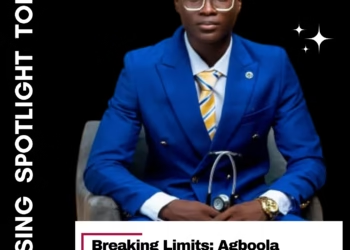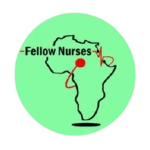Varicose veins are swollen and enlarged veins. They are often blue or dark purple and lumpy, bulging, and twisted in appearance. They occur on the legs and feet.
Not all varicose veins bulge to the surface; sometimes they can be invisible and buried deep in the body. Therefore, some people experience pain and discomfort for a long time before discovering the cause.
Almost anyone can have varicose veins, and according to the Society for Vascular Surgery, they affect around 35 percent of people in America.
Fast facts on varicose vein pain:
Some people may experience no symptoms beyond appearance.
Varicose veins near the skin surface can burst and leak due to physical trauma.
There are ways to ease the symptoms associated with varicose veins.
What are the symptoms?
Varicose veins on backs of legs.
Varicose veins may not always cause symptoms, and symptoms may only be present in certain conditions, such as warm weather.
Sometimes, varicose veins cause no symptoms, while other times, they produce a range of symptoms. Common symptoms include:
aching and uncomfortable legs
swollen feet and ankles
burning or throbbing
muscle cramps, particularly at night
itchy skin over the affected area
skin discoloration
heaviness or fatigue in the legs
Symptoms tend to be worse during warm weather, late in the day, or when a person has been standing up for extended periods.
Pain
Varicose veins are a common cause of leg pain. People often describe the pain as heaviness or a deep ache.
There are varying degrees of pain associated with varicose veins, and some people experience severe symptoms.
One condition that can cause pain is known as phlebitis, which occurs when varicose veins become inflamed and form blood clots. Signs that a person may have phlebitis include:
pain
heat
hardness
discoloration
If a vein bursts, blood can pool around the affected area and pressure and toxins may build up. Sometimes an ulcer may develop, or a person’s skin may tear as a result of a varicose vein, which can be extremely painful.
What other issues affect varicose vein pain?
Lymphedema
Mature female patient speaking to female doctor,Identifying varicose veins, and taking steps to treat them, may help to prevent complications, such as lymphedema.
Varicose veins can also cause problems elsewhere in the body — specifically the lymphatic system.
The lymphatic system is a network of vessels that help transport and remove waste products and toxins. It plays a major role in immune system function.
Sometimes, varicose veins can damage the lymphatic system and lead to a condition called lymphedema, which causes swelling, often in the feet and toes.
Some people who have lymphedema may also develop cellulitis — a serious skin infection that causes inflammation to the soft tissue of the skin.
Other people may develop venous stasis dermatitis, where the skin becomes leathery and ruddy-brown. Sometimes clear-yellow fluid weeps through the skin.
Dermatitis
Varicose veins can also lead to dermatitis, which is an itchy, inflamed rash. When caused by varicose veins, the rash will often appear on the lower leg or ankle.
Dermatitis can cause bleeding, skin ulcers, or sores that can be painful and become infected if scratched or irritated.
Superficial thrombophlebitis
Varicose veins can also lead to inflammation and the formation of a clot in the vein. Often this clot will be close to the surface of the skin in a condition known as superficial thrombophlebitis.
This can cause pain and lead to other problems in the affected area.
What can I do about varicose veins?
Varicose veins are a relatively common but treatable condition.
Prevention
Unfortunately, there is little evidence that people can prevent varicose veins from occurring, but they can make various lifestyle changes that may help lessen symptoms and possibly prevent varicose veins from worsening.
Prevention and symptom relief methods include:
Avoiding standing or sitting for extended periods
Trying to move around at least every 30 minutes
Raising the affected area raised above the level of the heart when sitting, resting, or sleeping
Doing regular exercise to improve circulation
Losing weight if overweight
Avoiding tight-fitting clothes, particularly those that are tight around the waist, groin, and legs
Avoiding wearing high-heeled shoes for long periods
Treatment
Woman putting compression stocking on to treat varicose veins.
Compression stocking are a non-surgical and economical option for treating varicose veins.
Varicose veins do not always require treatment. However, if they are causing pain, there are various treatment options available.
If symptoms are minimal to mild, the doctor will likely advise the person to try the prevention methods mentioned above first to see if they help reduce pain and discomfort.
If they do not help, then a doctor might recommend the following treatment methods:
Compression stockings
In the first instance, a doctor will likely suggest compression stockings combined with elevating the legs and exercising regularly. A person may need to wear the stockings for around 6 months before they feel the full effect.
Compression stockings compress the leg tissue around the veins to prevent blood from pooling. They are designed to help reduce associated aching and swelling.
Ablation
Ablation uses heat to seal the affected veins either by a laser or radiofrequency.
Ablation treatment is often administered in the doctor’s office and takes around 20 minutes. The doctor uses a local anesthetic to numb the affected area, so the procedure is painless. Once the ablation is complete, the doctor will wrap the area in a compression bandage.
Sclerotherapy
This procedure involves injecting a foam called sclerosant into a varicose vein. The foam causes the vein to spasm, scar, and clot, which will then close the vein off.
This type of clot is not dangerous and, over time, the varicose vein will disappear.
Surgery
Some people may require surgery, which can include ligation — where the veins are tied to stop the blood pooling — or stripping, where a surgeon removes the vein.
When to see a doctor
Doctors do not consider varicose veins to be a serious condition, and people who have them without any discomfort do not need to see a doctor.
However, if they are causing pain, discomfort, or irritation — particularly at night — then people should seek medical treatment.
It is worth remembering that because varicose veins are not always visible, anyone who experiences aching, swelling, or fatigue should still see their doctor for evaluation.
By Tom Seymour Reviewed by Stacy Sampson, DO










